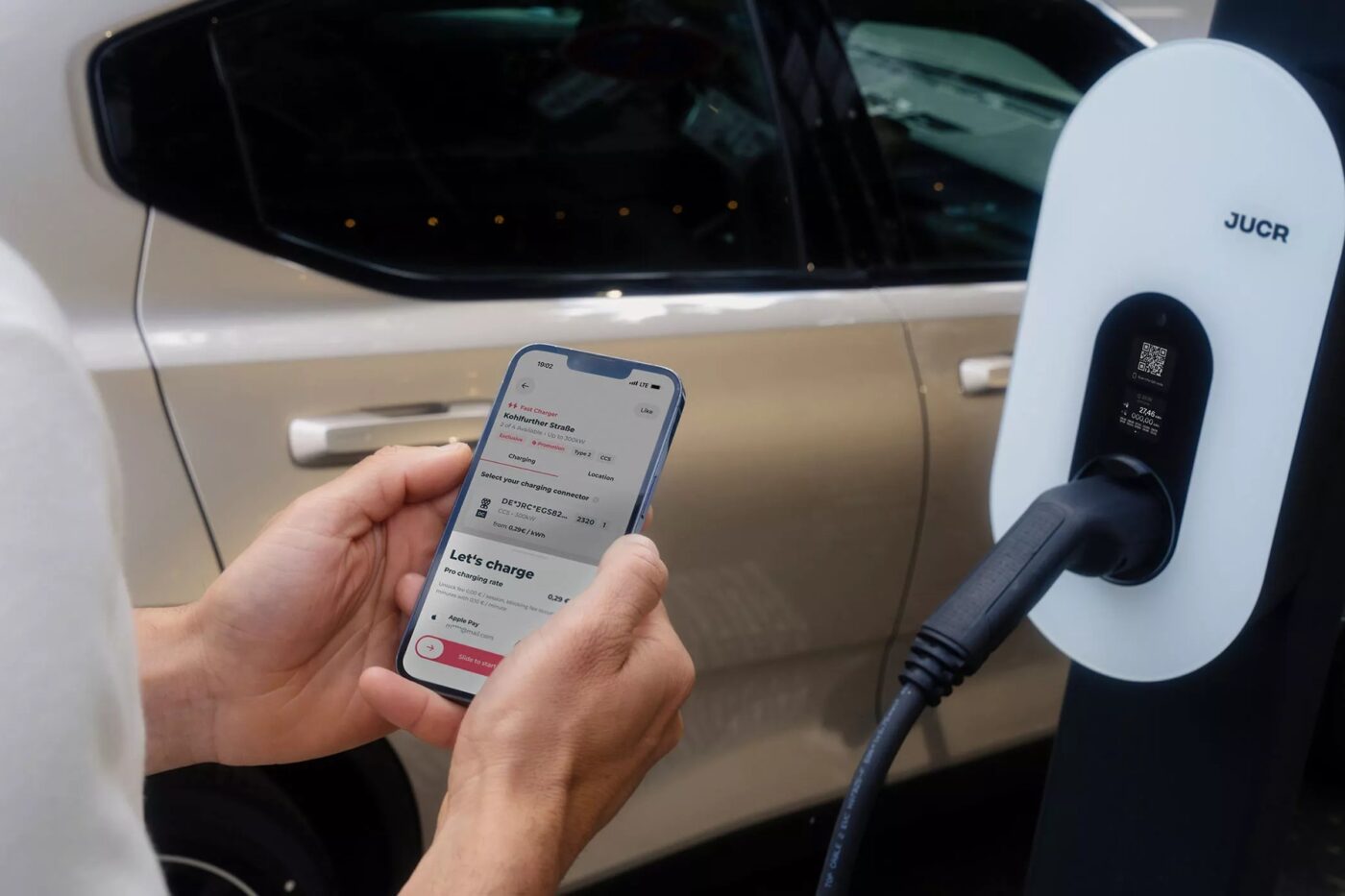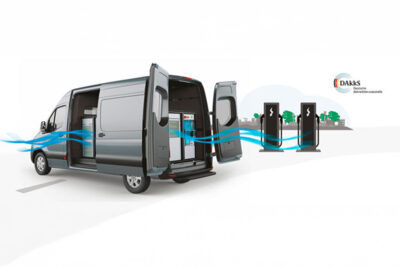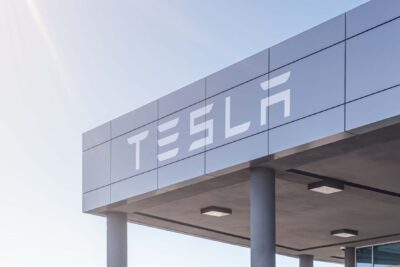
European Alternative Fuels Infrastructure Regulation to kick in from April 13
According to the European Alternate Fuels Infrastructure Regulation (AFIR), publicly accessible DC fast chargers from 50 kW must then be equipped with a card reader or a contactless payment option for ad-hoc payment. For charging stations with lower charging capacities, a dynamic QR code is sufficient – but “dynamic” is the keyword here. According to the BBNM, a sticker on the charging station with a static QR code is not enough. This is because the QR code should be able to be used to start and pay for the charging process – and must therefore be created individually for each charging process. This requires a type of display that can show the dynamic QR code. The payment process must also be processed via a corresponding backend and a secure data connection.
This makes April 13 an important deadline. Until now, the charging infrastructure industry had expected the new regulation to come into force on July 1 in accordance with the amendment to the Charging Station Ordinance, but then uniformly for all charging stations. However, at the request of the BBNM, the responsible department IVA6 of the Federal Ministry of Economics and Climate Protection (BMWK) has confirmed that the AFIR will render “the previously valid German Charging Station Ordinance (LSV) largely ineffective”.
The AFIR guidelines were launched by the European Parliament last July. The main focus was on the density of a European charging network on major highways (every 60 kilometres for cars and every 120 kilometres for trucks and buses by 2026). In addition, the AFIR contains further specifications for these charging parks (the details can be found in this article), as well as payment modalities.
Retrofitting required by 2027
The corresponding regulation (linked at the end of the article) states: “At publicly accessible recharging points deployed from 13 April 2024, recharging on an ad hoc basis shall be possible using a payment instrument that is widely used in the Union. To that end, operators of recharging points shall accept electronic
payments at those points through terminals and devices used for payment services, including at least one of the following: (a) payment card readers;
(b) devices with a contactless functionality that is at least able to read payment cards; (c) for publicly accessible recharging points with a power output below 50 kW, devices using an internet connection and allowing for secure payment transactions such as those generating a specific Quick Response code.”
From January 1, 2027, fast chargers with 50 kW or more “deployed along the TEN-T road network or deployed on a safe and secure parking area” must meet the requirements in points a) and b), meaning have a card reader or a contactless payment option. This also applies to charging points that were installed before April 13, 2024. In other words, such charging points must be retrofitted by the end of 2026.
If Plug&Charge is offered at the charging points (or officially “automatic authentication”), operators must also ensure that users have the option of not using automatic authentication at a charging point – for example, to pay with a different (usually cheaper) means of payment. “Operators of recharging points shall clearly show that option to end users and offer it to them in a convenient manner at each publicly accessible recharging point operated by them, at which
they make available automatic authentication”, according to the regulation published in the EU Official Journal.
One point that is likely to cause much more discussion in the industry than the Plug&Charge regulation: “Prices charged by operators of publicly accessible recharging points shall be reasonable, easily and clearly comparable, transparent and non-discriminatory,” states paragraph 3. And from April, prices must be uniform; the charging point operator (CPO) may no longer charge different prices to end customers and other mobility service providers (MSPs) – or even different conditions between individual mobility service providers. A distinction between B2C and B2B tariffs is still quite common today. However, it goes on to say: “However, the level of prices may be differentiated, but only if the differentiation is proportionate and objectively justified.”
What price is “reasonable” and “proportionate”?
However, paragraph 5 later states: “Prices charged by mobility service providers to end users shall be reasonable, transparent and non-discriminatory.” This means that MSPs are no longer allowed to set arbitrarily high prices, as they must be “reasonable”. And MSPs must provide “prior to the start of an intended recharging session, all price information specific to that recharging session, through freely available, widely supported electronic means, clearly distinguishing all price components, including applicable e-roaming costs and other fees or charges applied by the mobility service provider.” These charges must also be “reasonable, transparent and non-discriminatory”. Incidentally, additional charges for roaming abroad are no longer permitted. There are also precise requirements as to the order in which the prices or price components must be presented so that end customers can compare the tariffs. The price per kWh must be stated first, then the price per minute, followed by the price per charging session and any “other applicable price components”.
Meeting all these requirements by April 13, 2024 will probably not be an easy task for the industry, despite the preparations. The BBNM also points out that “most of the AC charging stations currently available on the market will no longer be permitted in this form from this date”. This is because they do not have the ability to generate and display dynamic QR codes. “The requirements cannot be realized with most of the AC charging stations and backend solutions available on the market,” said Andreas Varesi, Managing Director of BBNM. “In addition to the costs for the necessary hardware, there are different transaction fees depending on the payment method, which are passed on to the consumer. This makes public charging, which is already burdened with high additional costs and fees, even more expensive.”
CPOs face higher costs
Varesi also gives a concrete example: “In order to guarantee the price transparency prescribed in the Price Indication Ordinance (PangV), it would be more consumer-friendly to install an additional display at charging stations with NFC readers – even if this is not explicitly required in the AFIR.” And that creates additional costs.
It is true that the first providers are positioning themselves to provide a quick and easy remedy with their payment solutions for the large CPOs. However, even such solutions must first be procured, installed and connected to the company’s own backend. A well-known solution in this area with a central payment terminal for several charging points is PayT from GLS Bank, for example; an installation can be seen here at the Seed&Greet charging park in Hilden. The startup ev-pay wants to integrate itself into the charging system with its own EV-pay tariff server (EPTS) and thus make charging easier for end customers and CPOs. The Physikalisch-Technische Bundesanstalt (PTB) has already given the concept itself the green light, but the solution has not yet been certified, according to a LinkedIn post by ev-pay. This should happen “quickly”.
linkedin.com (BBNM), linkedin.com (ev-pay, in German), europa.eu (PDF, page 24)




1 Comment